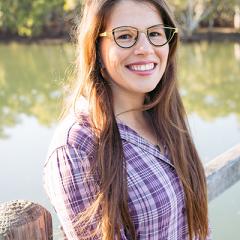Spending most of my childhood exploring the bush and wetlands near our home really nurtured my passion for the environment. After high school, I pursued environmental engineering because I reasoned that as I enjoyed maths and physics, I had a responsibility to do the jobs needed to protect the environment on a large scale. However, after graduation I worked as a Water Resources Engineer in drainage for six years until I became Lead Detailed Design Engineer for a major Bruce Highway upgrade. For this project, I went out to site to get an idea of the proposed alignment and found myself standing in the bush, looking across a beautiful wetland, just like the one I grew up near. I will never forget my manager saying, “No, Alice, we’re filling in the wetland, this is where the highway will be. The birds will just fly away anyway”. I felt sick.
I submitted my resignation a few months later and embarked on my PhD journey.
Climbing every mountain
Now, what a lot of people don’t know about me is that when I was 25 years old, without ever having walked in snow in my life I decided to try mountaineering. In 2015, I claimed the fastest female ascent for the season of Mont Blanc in the Italian Alps, and fell in love with ice climbing. I continued to pursue this new hobby and travelled to Switzerland, Italy and New Zealand undertaking mountaineering courses, gaining skills in glacier, alpine and vertical rescue, which on one occasion actually saved my life. I would have become a mountain guide if Queensland wasn’t 5 km from the sun but instead, during my PhD, I became an indoor rockclimbing coach and an outdoor guide.
Bridging nature-based gaps
Now I work as an Ecological Engineer, a role not recognised by industry, striving to bridge the gaps between engineering and marine science for the design and restoration of coastal wetlands. My particular niche is that I work in coastal ecology and restoration, but with the perspective of an engineer. I understand how projects get approved and are undertaken, and I am acutely aware of the flaws and barriers to restoration when it comes to design guidelines. In Queensland, engineers are personally accountable if designs fail, so an engineer is less likely pursue designs without well-established technical guidelines such as nature-based solutions for coastal protection, which currently have no guidelines. Paper by paper, I am slowly building up the literature on nature-based solutions for coastal protection and, in October this year, I published the first paper that compares the physical design and predictability of a coastal ecosystem (seagrass) to an engineering structure (see reference below).
I am attempting to pioneer this new field of ecological engineering, as it is feasible that design guidelines could be developed for nature-based solutions. They just need to be very interdisciplinary.
Pioneering spirit awarded
Outside my academic research, this year I made a big step towards pioneering the field of ecological engineering. I was nominated for the Young Professional Engineer of Australia for 2022 and was awarded a finalist for Queensland and additionally awarded Highly Commended (2nd place). I introduced myself as an Ecological Engineer and used the spotlight to explain this field and the work that I am currently undertaking. I feel I need to be successful not only for my personal career goals, but so that real change can be made. Following this path, I believe it’s not inconceivable that I could help change the face of environmental engineering in Australia, even if it’s just one wetland at a time.
In another achievement outside academia, to share my love of the outdoors with others, this year I published with co-author Miranda Fittock the first guide to overnight (multi-day) hikes in our region: Overnight Hikes South East Queensland.
Twomey, A. J., Callaghan, D. P., O’Brien, K. R. and Saunders, M. I. (2022). Contextualising shoreline protection by seagrass using lessons from submerged breakwaters. Estuarine, Coastal and Shelf Science, p.108011.
Teaser image: Seagrass transects at Nudgee Beach. Photo credit - Miranda Fittock, MirandaFittock.com
Image above: Fieldwork in the mangroves of Boondall Wetlands. Photo credit - Miranda Fittock, MirandaFittock.com

